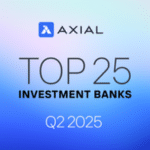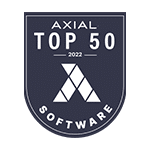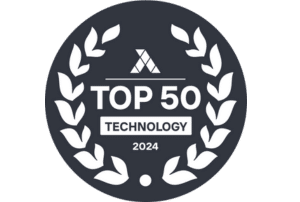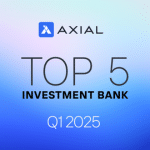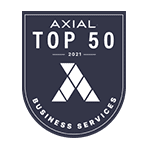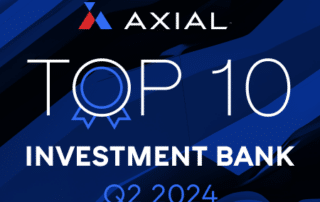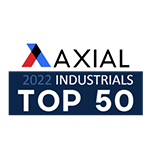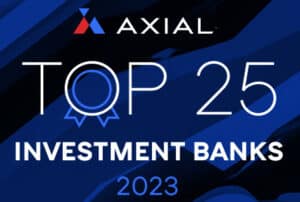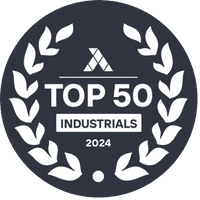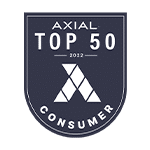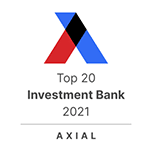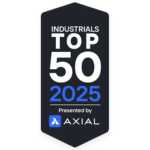
Shaping the Future and the Road Ahead with Aaron Schulenburg
On this week’s episode, Cole Strandberg chats with Aaron Schulenburg, Executive Director of the Society of Collision Repair Specialists, or SCRS. Aaron is a tireless advocate for collision repairers and a trusted voice on the biggest topics shaping our industry. In this episode, they dive into some of the hot-button issues in the industry right now — including Right to Repair — as well as talk about what to expect at upcoming CIC meetings, SEMA, and what SCRS has planned in the months ahead.
Aaron Schulenburg: So, you know, it’s funny, I think people always ask about the right to repair. And that’s such AI don’t know. It’s just a term that I think it gets overused or misused in a lot of cases because it’s been applied in all these different cases that aren’t really about repair, they’re about vehicle data access. And that’s not always the same thing. Here’s what I think everyone can agree on. Consumers want to be able to choose where they get their vehicle repaired. They want to be able to choose how they get their vehicle repaired. They want to be able to choose what parts and equipment is used in those repairs. And they want a vibrant independent community that can fix their vehicle for them. So I think as an independent repair, as an organization that represents independent repairers, I think we I agree with that. I think the automakers that we work very closely with agree with all of that in the fact that their customers and our customers are mutually benefited when there is a strong independent market who’s able to fix cars properly with the information that’s available. But I think there’s a difference in supporting what is actually consumer choice and what is protecting the commercial interest or the ability to commercially influence what consumers choose. Those aren’t the same thing, right? And so I think what we find a lot of the time in the collision repair space is we have customers who come in and they want something very specific. I want my car exactly like it was, right? I want you to do all the things that make it work exactly like it did that, make it look exactly like it did that, make it feel like it did before I was involved in this accident. And, and I think we’re very fortunate in that there is a lot of of information, a lot of data, a lot of instruction, a lot of engineering documents, a lot of procedures, a lot of reference material, a lot of recommendations and requirements that goes, this is how you go through that process of making the vehicle like it was before, right? It’s designed for that purpose. So I think that there’s a lot of like miscommunication that happens sometimes at the federal level saying that that doesn’t exist. And the reality is today there are thousands of collision repair shops across the United States that are very capable of restoring those vehicles and doing it the way they’re supposed to be done. What we’ve worked on closely with the automakers with SCRS is, is trying to make sure that a, those consumers have the choice that they that in, in where and how they get their vehicle repaired. But also in shifting the conversation to address some of the obstacles that keep independent collision repair businesses from being able to deliver on that promise, performing the repair properly in the way that the the data in the repair procedures instruct. Right. And so at the federal level, we announced earlier this year that that we had been working with the automakers and other repair groups to create a federal framework that we anticipate will be introduced formally soon. And that framework is called the Safe Repair Act. And really what that that is, is it ensures that independent repairs would continue to have equal access to vehicle repair data as franchise dealers have. It would ensure that consumers, rather than insurers, have the right to decide where and how their vehicles are repaired. It would make sure that consumers have the ability to have their vehicle repaired properly in accordance with the documented procedures that are already available to the industry. And that consumers have the choice of what type of parts they want to have installed on that on their vehicle. And no matter what type of part they choose, that they’re entitled to be protected by the same recall and safety protections. And then additionally that consumers should be protected from unsafe and improper repairs through a thorough and robust post collision and periodic safety inspection program. So I think there’s a lot of stuff that that really is about the right to repair the consumers right to choose safety and and a lot of collaborative work that’s gone into making that happen.
Cole Strandberg: You guys have been busy, man. It’s crazy to see where we have the government and our industry collide and how impactful it is on on so many lives and on so many livelihoods. Where super helpful overview. Where are we today in terms of the progress being made and, and OEM procedures and having them being accessible to independent shops and this is very kind of across the country. Or is there an overarching theme here and and where we stand today?
Aaron Schulenburg: Yeah, I get asked that question a lot. And I think that question often assumes that the procedures aren’t already available, right? And they are. And so I think a lot of times that that perception that we don’t have access to the information we need to fix cars properly is created by people who may have an otherwise alternative motive and what they want to access from the vehicle or things along those lines. I know that I speak with collision repair businesses everyday, as I mentioned, who, who are capable of doing this. They’re in the independent market, they’re family owned businesses, they support their local communities and they have the access to the information they need. They have the access to the procedures. But a lot of those obstacles that that get presented to them are, are that not all segments of the industry have embraced that those need to be followed every time, right? And so you have these safety inspections, you have, you know, structural documentation on how to properly perform panel replacements or structurally measure a vehicle or be able to work on the components within the vehicle or re establish those functions. All of that documentation exists. And when it doesn’t, we work very closely with automakers to identify and correct that. But I, but I, but I think, I think the reality is, is the assumption that that there isn’t already access misses what’s already available to the industry today.
Cole Strandberg: Well, it’s, it’s funny, man, because we’re seeing again, government seeping into our industry and anytime you have government there, we have like a marketing attempt. Who can create a bill that sounds the best, right? Who can disagree with right to repair? That sounds great. Who can disagree with the safe Repair Act? That sounds great too, to peel back the layers and really get a sense of who the parties are pushing for which outcome I think is super, super helpful. So always appreciate being able to connect with you on the these issues.
Aaron Schulenburg: And I think, I think your point about who’s driving what becomes really important, right? So like I think for the industry, for anybody who’s watching and doesn’t know, you have the Repair Act, which is supported largely by groups like insurers and the aftermarket parts lobby, right? So like Car Coalition, LKQ Kappa, the insurers like APCIA and Allstate Farmers, right, are, are, are all kind of behind this repair act. The Safe Repair Act is largely being, you know, driven and influenced by collision repair and, and independent repair organizations like ours and other groups. And then you have, you have the automakers who are also working on that. So groups who are responsible for designing, developing the vehicle and groups who are responsible for repairing it are really the ones who are kind of driving that conversation, again, for all the reasons that we just talked about.
Cole Strandberg: Super helpful to know that, right? We don’t take sides politically, anything politically here on the collision vision, However, I mean that that sort of tells you everything you need to know, right, Based on who has what agenda and what bill or act is being supported by whom, what role. As we listen to this, it’s tempting for shop owners to feel completely on the sidelines here where there are groups fighting it out and we’re sort of just watching and, and, but have no control here. What role can individual shop owners play in making their own voices heard on these issues?
Aaron Schulenburg: Yeah, I think a lot of times that comes down to involvement in your, in your community and in your associations, right. I, I think there’s also the ability if you have political capital in your community, in your state with, with people who represent you, use that voice. The, the reality is, is, is people who create who, who you know, are responsible for evaluating bills and creating laws, they want to hear from their constituents. They want to hear from small businesses that they represent. They want to hear from people in their community. So I think, I think every business has the ability to reach out to kind of say, here’s what I’m going through and here’s what matters to me. And even if you don’t understand each of the bills, being able to express what your reality looks like helps shape the perspective of, of what needs to be fixed. And I think, but you know, so whenever you can find opportunities to help your consumer tell their story to, to help set your consumer up where maybe they want to tell their own story. I think all of those are things that that collision centers can, can proactively do. And if you’re not comfortable doing that on your own, again, working with an association who represents you at a state level or at a federal level is a great Ave. to, to kind of like being part of a, a collective voice and being able to, to, to accomplish these because it’s hard. I mean, as a, as an, as an individual small business, you’re focused on your customer and fixing that car properly and all of the challenges that go along with that. I don’t think a lot of people are paying attention to who’s supporting what bill at the state level and at the federal level. And oh, does that sometimes conflict with one another? So I, I think, I think that’s where associations and and voices that pull in that common community become really important.
Cole Strandberg: I, I think you bring up a few good points here. Number one, for these lawmakers, this is one of hundreds of issues they’re thinking about. Whereas for us in this industry, this is paramount in terms of importance. So telling your story is super impactful and getting involved with your state or regional or local association is a great way to do that. How can people learn more about who’s involved and how to get involved in a state and local association? Would love to include any resources there for folks listening where that’s of interest.
Aaron Schulenburg: Yeah, absolutely. I mean, I look, I would start with I, I think our website is a great resource. So scrs.com is a great place. We’ve got almost 35 state associations that are under our umbrella that that represent businesses at a state level. You can find them all on the scrs.com website. So if you’re going, I’m in in Nebraska and I want to figure out who my association is, or I’m in Washington state or I’m in California or Virginia, that would be a great place. You can come to our website. You can find those state associations. You can get involved that way. And I think there’s a lot of material. Look, I’m a big advocate, Cole, for paying attention to what’s going on in the industry through the news outlets as well. So obviously auto body news is, is, is a great resource for that, as is a lot of the other publications out there. SCRS has has our own news outlet as well with Repair Driven News. I think reading all of these and being able to take in that information is a great way to kind of like start to connect the dots on who’s participating in in what area and what voice are they representing.
Cole Strandberg: I love it. Get educated, get opinionated, and then go ahead and take action to to make something happen, make the moves happen. Our first conversation together on the Collision Vision was exclusively focused on these issues and right to repair. I want to move on today, but before I do, is there anything we’ve not touched on with this topic that’s pertinent that needs to be brought up?
Aaron Schulenburg: No, all I’ll say is I think collision repairers need a voice and it’s important to have that. And so whether it’s coming from you or your involvement, just just make sure you’re you’re supporting that.
Cole Strandberg: Beautiful. Love it man, love it, love it. So it is no secret we talked about this in in our little pre show conversation. You are everywhere, man, whether that’s in the digital world or more importantly, physically out there in shops, at trade shows, at events, zooming out and kind of like an overview state of the industry. What trends are you seeing when you’re engaging with shops around the country? What are folks talking about to you and what matters to them?
Aaron Schulenburg: Yeah. So I think a lot of the conversations I’m having today are around the technology that that is driving some of the, the requirements that we have here on following procedures and making sure that they have access to that information and that they understand how to go and, and, and utilize that. And in addition to the technology itself, I think it’s the pressures that they’re facing. I mean, a lot of the conversations that I have, Cole, are on the, the increase of pressure that they’re feeling. And, and I don’t think it’s regional, I think it’s across the country. Pressure on pricing, pressure on rates, pressure on, on what type of procedures are being acknowledged and reimbursed for and the challenges that puts the consumer in when they’re looking to receive that repair that puts them back into the condition that they were prior to the prior to the loss. I you know, I think we’re seeing some interesting, some interesting effects of insurers trying to control their own product costs by putting pressure back on the industry. And while they’re objecting to rate caps or, or, or downward rate pressure on their own premiums, they’re looking to apply it back in the collision repair space. And what what displaces an insurer similarly displaces small businesses that are trying to also adjust for inflation and also adjust for the rising costs of not just parts and materials, but of the labor that they employ to be able to fix these vehicles properly. So I think, I think those are a lot of the types of things that come to my attention that are that are that are brought to the attention of the association. Those challenges where you’re starting to see carriers try to negotiate their own agreements with product producers or vendors or equipment manufacturers trying to secure rates for for the shops that are working within their programs, that becomes very challenging and and really shifts the competitive landscape in some potentially uncomfortable ways. I also think that we’re hearing a lot about the slowdown in business, right? And so you start to look at that, that pressure you have on, on pricing and on those agreements coupled with slower business conditions where you don’t have quite the backlog that maybe you did. I think what it, what I see is it requires a very strong understanding to your business mission and your business vision and the culture that you’ve built to really be able to maintain what you’re looking to accomplish rather than allowing some of that exterior influence to change the way that you’re intending for your business to operate.
Cole Strandberg: I love it, man. These are things that I, I would echo hearing across the country. I think you have a unique insight though, because no barriers or walls are up when they’re speaking with you, They’re going to you and, and the organization that you represent as, as a resource, right as an ally here. And so I think that unfiltered feedback is super cool. Obviously, we have challenges. You’re gonna be brought with more challenges I think than than hey, great news. This is getting easier. But have you seen any trends across the industry where we seem to be improving on? I’ll use one example and this is sort of taking lemons and turning them into lemonade, but with a slow down and a a decrease in claims volume, you hear less about the technician shortage and and part of that’s gonna be helping us solve it and and do some great things. The other part is the lack of demand. So we can take that with both sides of the coin. Any wins, any cases of improving and feeling positive across the industry you could share?
Aaron Schulenburg: Yeah. You know, I, I have this unique circle of influence on on repair facilities that I get to interact with on a regular basis. And I think many of those who are in our membership and who are involved in their industry tend to be at the at the front of delivering on consumers expectations and things along those lines. So I think where we’re doing a good job of, of lifting up is I see a lot of businesses today that really have figured out how to prioritize that safe thorough repair experience, that customer experience right over maybe maybe what businesses looked like 10-15 years ago. I think there’s still, there’s still a very broad array of different types of businesses and what they’re structured like. But I see more and more businesses today that are focused on following those procedures, producing thorough repairs, delivering on the customer experience in a way that creates a a very uniform expectation between what they want from their auto manufacturer and what they want from their independent repair facility. And I think that’s AI think that’s a real positive thing, right? I think I recall a day having been been in this position for a while where I think it was viewed as a very radical position in the industry when you were adamantly set on, I’m going to follow procedures and I’m going to do certified type repairs, things along those lines. And that could often be be viewed as like a radical perspective. I don’t think that’s the case today, right? Like that’s just kind of like what what we expect as the standard of repair in the industry. And then I think there’s a lot of work to bring people who may not be there yet today up and help help the industry rise up to that to that expectation. So I think those are all good things that that we’re seeing. I also think a good thing is. There is ample information available today and ample channels to be able to access it. So, you know, social media can bring both benefit and challenge. But I don’t think that that businesses operating in our space today have any shortage of places to go get help or information or to learn more about the industry. And that wasn’t always the case either, right? And so I think there’s benefit from overexposure to information and overexposure to channels in which you can go receive assistance.
Cole Strandberg: No, extremely well put a ton of resources out there and it’s been a trend in this industry over the last few years, as far as I can tell, where there’s this openness and this willingness to share that acknowledges, hey, we’re all in this together. And a, a big part of that is organizations like SCRS and CIC and ICAR and, and opportunities for everyone to kind of get together and, and put their collective voice behind something nothing bigger than themselves. To that, it’s an amazing segue talking about resources. Give us a a a quick rundown of how all SCRS is helping their members navigate some of these challenges that we talked about from consolidation, talent shortage to new technologies, right to repair, everything in between.
Aaron Schulenburg: Yeah, Yeah. So I think, I think there’s a lot of different resources that probably touch on a number of those different types of challenges. So I think small businesses have struggled in general and being competitive for employees. And that is part of the challenge in competing with consolidation and with the talent shortage, right? You have people who pick and choose what do I want to do with my future? And, and if the collision repair industry isn’t attractive, we’re going to see them exit into other areas that have technical requirements, but may provide more. So I think we’ve spent a lot of time as an association going, how do we help create better opportunities to provide better lives for the people within our industry, not just for the businesses, but for the people who work day in and day out with their hands on those customers, vehicles delivering on that. And so we’ve spent a lot of energy building programs that will do a better job of protecting their futures. So retirement programs that over the course of their career can help earn more because we’ve leveraged the scale and scope of the association. I there’s, there’s obviously going to be a significant reduction in fees when you’ve got multiple businesses participating in a plan and that fee structure is based on, you know, $30 million worth of assets versus a business that’s got, you know, 10 employees and has a half, $1,000,000 of assets. The employees are going to absorb a lot more of those fees in the, in that singular experience when we can scale that for everybody, those fees are spread across all the participants. And So what we’ve seen with our plan, we’ve looked at some hypothetical examples, but, but even, you know, folks who are, who are at the, you know, they’re, they’re at the start of their career. If they start contributing to their retirement plan, it can, it can accumulate much better for them over the course of time, right? And so looking at how do we develop opportunities like that where they can benefit and their families can benefit, Same with healthcare, How do we pull in better experiences? And we launched a healthcare program a couple years ago and, and it today, like remains one of those things that I feel really excited about because I have shop owners who look me dead in the eye with tears in their eyes talking about this experience that their technician had as a result of having better benefits, right, Aaron, It saved their life, right? Or it changed their life because they were, you know, at somebody who was having their first child and, and otherwise would have been out of pocket $6000 ended up having a very minimal out of pocket experience, right? Those are things that that are impactful to people. And if we can be better employers and a better industry for people to land, I think we can do a lot more to attract people in and attract people to small businesses that can keep up with competing with other larger entities both in and outside of our industry. So those are those are some of those types of examples. We’re also working on on with other, with other entities in this industry who are doing a lot of good work to try to address the training and the curriculum and the resources that are available to attract talent in. So working to influence and, and participate with groups like ICAR and the collision engineering program and with craft. These are entities that are all doing a lot of good work in this space. And it’s important for them to have the support and input from the collision repair professionals such as our our members and our group. And so we work very closely with them. And then on top of that, it’s the ability to capture all of the billable items that you need to be able to identify the repair process and be able to bill for it appropriately so that you can pay those technicians, right. And so we’ve developed programs like the BOT and the DEG that are designed to both address errors and accuracies in the estimating system with the DEG and then to capture any missed or overlooked operations, which is what the BOT performs. So I think the combination of those types of technical services with maybe the the the HR benefit programs, I think are ways that we’re working to go. How do we how do we take that support that we get from the industry and reinvest it in programs that can meaningfully change the outcome?
Cole Strandberg: Man, you guys have a lot going on. It’s it’s heartening for two reasons. Number one, you’re in charge of keeping that all together, not me or anybody else listening #2 that we do have these organizations that are behemoths in our industry representing a lot of us collectively working on our behalf in the background. Well, we get to focus on doing what we do collectively as an industry, and that’s repairing vehicles to their their safe and proper conditions. So that is awesome. Back you mentioned the insurance and benefits piece. I’m compelled to mention that we had Richie Seabury on the Collision Vision a few months ago, talked a lot about the program with SCRSI. Want to go ahead and link that episode in the show notes for anybody who didn’t catch that. A really, really good conversation here addressing a lot of the benefits side of things. I want to move forward. We we talk about what’s happening in the background. I want to talk too about what’s happening right in front of us via a lot of these in person events coming up here later on in the year. Two of which I I want to dive really into. The first of which is CIC. The second is SEMA. So let’s start with CIC. Obviously, you are an animal hitting the road all the time. That’s been a cornerstone event in the industry. I know you’re there often. What can attendees expect for upcoming CIC meetings here? I know there have been some pieces of news out there talking about the need for more candid, meaningful conversations and for different types of representation at these meetings.
Aaron Schulenburg: All right. So, so SCRS is a association. We represent collision repair professionals. CIC is a conference, right? It is the collision industry Conference. It’s where all these segments of the industry come together quarterly to discuss issues, to discuss things that these committees have been working on and to give presentations. So it’s an event. And so it’s part of our role and our board’s role to be an influential voice at events like that and to show up and be present and, and to try to represent our members. Well. Often times we’ll get members who’ll text us, whether that’s me or, or, or our chair or our board members and go, can you bring this up for us at this upcoming meeting? Because we think it’s important to ask. That’s part of what we do, right? I think what people should know, if you’ve never been to a CIC event before and if you’re in a local market where it’s going to occur, I highly encourage you to come check it out. Because I think there’s a lot of value that comes from getting out of your facility and meeting with other people who may be of like mind, who may be from different sides of the industry, who may you may not otherwise have exposure to because because they’re not coming to the local areas. I just think there’s a, there’s a great opportunity in, in collaborating and working with people face to face. I also think that what’s interesting about CIC is it’s designed for the attendee. So there are opportunities at every, at every CIC and throughout the CIC event to address the issues that are important to you, whether the committees are discussing those or not. There are open mic periods and there’s opportunities to bring those issues to the table and ask not just the body of CIC, but ask the industry to address this, right. I’m dealing with X and I’m, and I, I want the industry to talk about this and address it. And, and CIC makes it a priority to give that opportunity. It was actually started based on the principle of there should never be, there should always be an event where there’s always a place for people to bring up what’s happening and, and bring it to the to the forefront. So I, I encourage that. I think the conversations around, you know, my my involvement in one in, in our committee and trying to have more candid conversations. It’s a lot like this Cole right. Like so a lot of times you’ll have panels of people who sit on the stage or you’ll have committees who kind of like want to showcase a broad amount of perspective because there is a lot of opinion in this industry and there is a lot of varying perspective. It’s hard when you’ve got 40 minutes and five people, right to really dig deep into somebody’s individual opinion or individual perspective. And so I think our approach with what we’re calling the kind of the reshaped, the committee that we’re that we’re working on, we’re calling it the industry experiment is to treat it more like an in person podcast, like a podcast in person. We’re not recording it. It’s but it’s going to be structured in the same type of way where we can just kind of have a candid deep dive into what does a relevant issue that’s affecting repairers look like today. And I’m really excited at the Philadelphia meeting. Bruno Moretti is the president of ADAS services for Essential Technologies is going to be joining me. Essential just underwent some really important research that takes a look at the impact of properly or improperly calibrated sensors and what effect that has on vehicle operation and the people and drivers around it. And we’re going to have a bit more of a deep dive conversation into what drove some of that research, what they expect to accomplish with it and what the industry should take away. And I think it’ll be, I think it’ll be interesting. I hope it’s different. I think the real objective here is how do we keep this live event interesting, engaging and really touching on the things that matter to the people who are in the room and and and reading about it throughout the country.
Cole Strandberg: So what it’s all about, right, providing value for the attendees, not for the speakers or panelists to hear themselves talk. And I think CIC does a good job of that. And, and present company included, I have the opportunity to speak on a panel at CIC at, at SEMA year before last. Great experience, terrifying level of access to folks in the industry where after every panel there’s the opportunity for Q&A. And it’s a scary experience for those panelists, I think to to be able to take, take questions and give some answers on the fly. But I think that’s an awesome pivot towards style of communication and and content. So love to hear it. Now that’s quarterly, once a year we got the big, big show across the industry and that is Seema. I know you and I spent some time together last year at Seema, had the opportunity to speak at the Ideas Collide portion of the SCRS show, which was awesome, awesome, awesome. Give me a primer for what you guys have going on this year coming up in November.
Aaron Schulenburg: So I think the program is going to look very familiar for people who have been before, but for anybody who hasn’t been, essentially you have the most exciting trade show that you can imagine for for the industry occurring, right? And there’s just this like spark of energy that happens at the SEMA show that you just you just don’t get anywhere else. Cole We spent a lot of time talking about like the hard parts of this industry. I think it’s easy that week to forget a little bit about like how difficult it is. And for me, and I think for a lot of people, it brings a lot of like, it re energizes you and makes you realize how exciting the industry is and what what potential and opportunity exists. But during that show, SCRS develops an education program. It’s called Repair Driven Education and we have classroom sessions that take place on Tuesday and Wednesday during the show on Wednesday, as you mentioned, we also have the ideas collide showcase, which is kind of like a industry specific Ted Talks type session, which I just love. It’s one of my favorites because I think it pushes people out outside of their comfort zone in delivering on their ideas in a, in a, in a different way. And I think, you know, if you’re, if you’re in the audience and you’ve got 10 speakers and 10 minutes a piece, right, you, you’re getting these like snapshots of like really just just cool perspectives on topics that maybe you wouldn’t go sit through a whole class on, but you get exposed to this idea and you get a chance to go and research it a little further. I’m excited this year because we have such a wide array of new first time speakers. I think we’ve got more than a dozen brand new faces that have never been a part of the program before, from technicians to shop owners to people from the glass industry, CE OS of companies like Rev and and go rentals. You’ve got people actually from the, the media outlets who are who are speaking for the first time and, and, and John Yoswick with crash and Rachel James, the owner of, of, of Torque Financial Group is coming. Jordan Hendler is actually going to be one of our one of our speakers this year for the first time. Maria Quintero with collision advice. We’ve we’ve just got like a wide array of people who are jumping in as as a first time participant in these programs and I’m really excited to to feature them in the both the classrooms and the ideas collide showcase. Then you’re going to have a lot of familiar faces as well, speakers that everybody loves to see and comes Tim Ronic and Mike Anderson and people like that, right? So I think we’ve got this amazing array. This is probably one of my favorite year lineups just because I think it’s got such a great array of topics and people. And really you can go check that out when you go to thesemashow.com and go to register. It’s built into part of that registration process where you can actually go and pick and choose. And my advice is you pick a full series pass and you give yourself access to all of it. And it just makes it really easy to go to go through that process.
Cole Strandberg: Love it man. It is a can’t miss event. You just rattled off a ton of friends of the collision vision as well. So really looking forward to that line up as well. And you also mentioned that spark around SEMA as a whole and we spent some time together at SEMA. We also bumped into each other in Frankfurt at Auto Mechanica a a month or two prior and that’s an amazing show too. But nothing replicates that energy and positivity and excitement quite like Sema does. So excited to check everything out there. I, I’d like to get some links for you to include that in the show notes. So anybody who wants to sign up for all of those sessions certainly can. Aaron, you’ve been extremely generous with your time so far, my friend. I want to land the plane with a couple of of kind of questions around looking ahead and, and predictions on the future of the industry and a reading on on the pulse of where we’re headed. I think your perspective and your conversations shed unique light there. What do you view as the biggest opportunity for shops over the next few years?
Aaron Schulenburg: You know, I think, I think you’ve had a lot of people who have championed specialization over the last handful of years. And I and I think that’s still probably sound advice. But but for me where I start to see the next several years going, especially in, in, in light of all the, the kind of dynamics and pressures that we talked about earlier, I think specialization on expertise around safety and safety restoration becomes really critical. And that may mean certification, it may mean brand specific, it may mean like all those things. But I think there is a distinct difference between a business that really understands what consumers are looking for out of safety and their choice to buy vehicles based on their safety, what safety systems and deliverables and things along those lines. And I think businesses that can harness that, that can really speak to the consumer at their level about what that means and what their capabilities are in restoring that have the greatest opportunity in the years ahead. Because I don’t think consumers are going to stop choosing vehicles based on new technology that are going to keep them and their families safe. And if you can speak that language and you can show your capability around it and you can demonstrate how you’ve made an investment in restoring that, I think you do a better job of, of connecting with the consumer. It’s it’s really interesting to me when you listen to into some of the, the calls between businesses as people do like, you know, research around that or even some of my own family members who’ve gone through these experiences. There are far too many businesses out there that are comfortable just being like, you know, Oh yeah, yeah, we can do that, but not really be able to engage or, or, or discuss how they take advantage of, of, of fixing safety systems. So I for me, I think that’s the biggest opportunity for shops at.
Cole Strandberg: I love it. Yeah, a different take that I’m familiar with. Certainly I’m a big believer in specialization. But at the end of the day, whatever you can do to fix a car safely, I mean, that’s that’s the primary thing we do in this industry. Number one, everything else is in the background. Could not agree more. I think that’s that’s paramount and importance. How can shop owners and managers who might be feeling overwhelmed with the amount of change that we’re seeing in the industry? It’s change and innovation every single day. Prepare for this change and continued change.
Aaron Schulenburg: Look, I think it’s a willingness to reinvent your business on a regular basis, right? And I don’t think that’s unique to our industry. I think that’s every business that wants to stay relevant. The expectations are going to change, the pressures are going to change. The technology is going to be different five years from now than it is today. I think the willingness to commit to investment in change becomes the most the easiest way to be comfortable in it, right? So I’m going to invest in training. I’m going to invest in in the tooling and equipment and infrastructure that I need to be able to adjust and adapt as the industry changes what it expects out of me. And if that’s your model and if that’s how you entered into your business with the expectation of doing that, it becomes a lot easier. I think for people who go, I want to continue to do what I’ve done. And there are a lot of businesses that that are there. I think the industry is only going to continue to be more difficult, right? It’s it’s not going to be static. Here’s what I think is great about it. When we start talking about attracting a younger generation into this industry, the younger generation is interested in. Changing dynamics, right? They’re interested in things that are going to feel different tomorrow than they felt today. And so I think if we can capitalize on that, build a business that revolves around changing with it, I think there’s a lot of opportunity there.
Cole Strandberg: Different perspectives and cannot agree more. Range is exciting for a large sub sector of who we’re trying to attract into the industry and keep in the industry. It’s a stressor for many, many others. But I think for every change and every challenge, we have equal or greater opportunity coming from that. So a great, great perspective and great take away there. Aaron, where can folks connect with you and learn more about all that SCRS has going on?
Aaron Schulenburg: Yeah, absolutely scrs.com is probably the best place. You can certainly find my contact information. If you want to reach out to me directly, my email’s [email protected]. That’s Aaron and, and, and, and truthfully, you know, we’re, we’re looking to support and work with every collision repair business across, across the US. So you can find us on Facebook, You can find us on LinkedIn, you can find us on our website. And, and I’d be remiss not to also encourage you to go check us out, find SCRS on YouTube. It’s SCRS collision. We produce weekly videos that help address quick tips for your team members that help address customer facing tips, right? So there are great marketing and, and, and training opportunities out of that information. They’re all three to four minutes long, really digestible information, but great ways to help reinforce maybe conversations you’re already having, whether that’s internal with your team or externally with your customer.
Cole Strandberg: Love it. Gonna throw those in the show notes for sure. So everyone take a look there. Who wants to learn more? Some great resources out there. Aaron, a pleasure to connect. I appreciate your time a ton. I appreciate always having the chance to connect with you and I appreciate most importantly everything you and your team do for the industry. Thank you for joining us on The Collision Vision.
Aaron Schulenburg: I appreciate you as well. Thanks, Cole.


